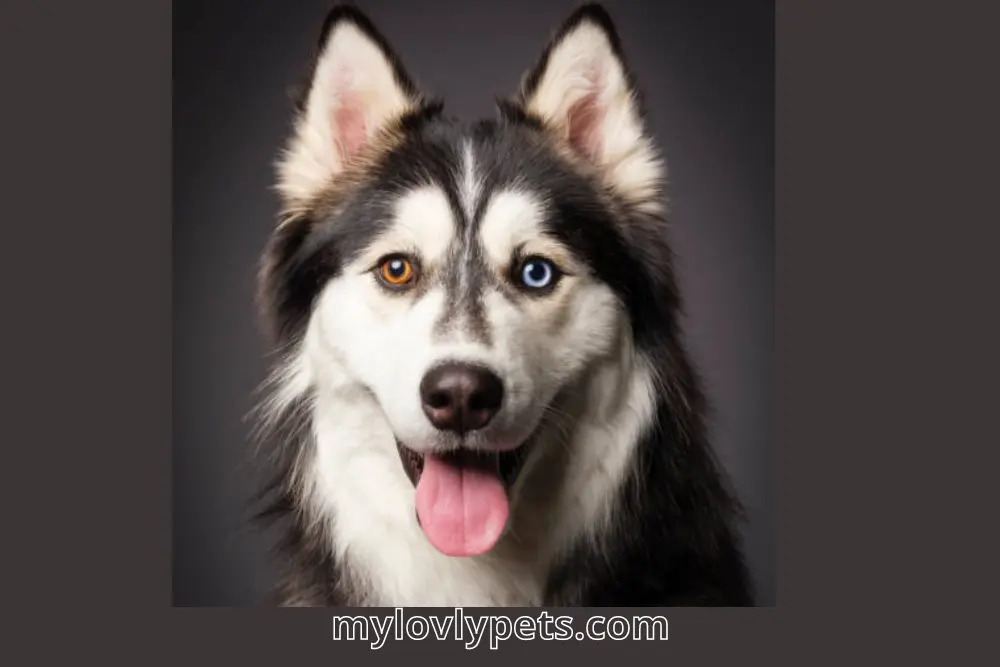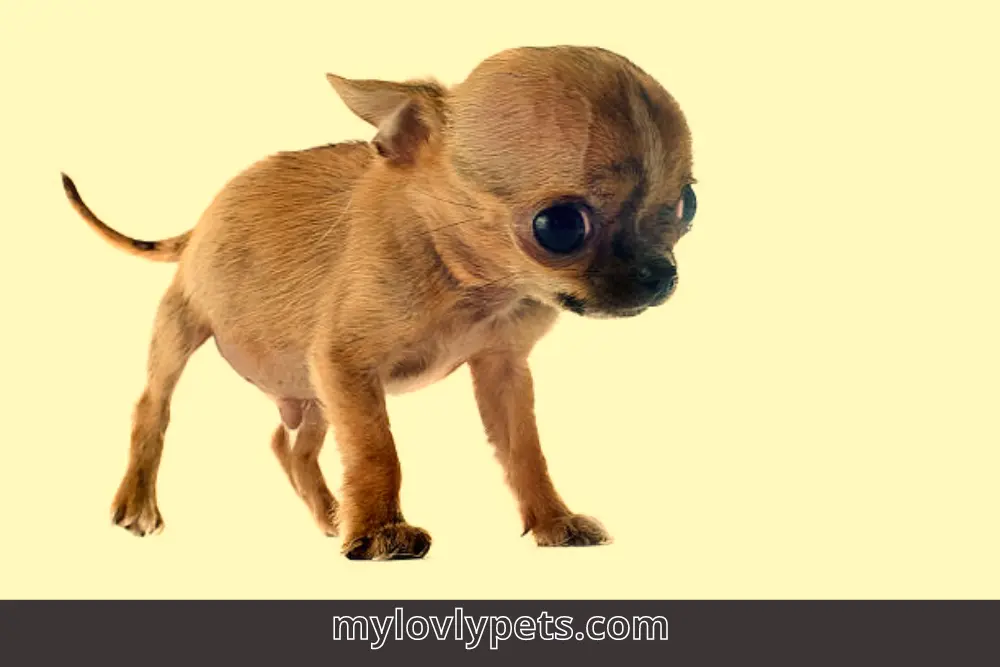
Wall Eyes Dog: A Fascinating and Rare Condition
Pets’ eyes serve as windows to their souls, expressing emotions and experiences that cannot be conveyed through words. What occurs when these eyes are not properly aligned? Misaligned eyes in animals can cause deviation or different colors.
Wall eyes in dogs refer to a range of eye conditions. Heterochromia or exotropia are two conditions that can cause dogs to have different colored eyes or their eyeballs to deviate outwards. Wall eyes dog can be present from birth or caused by certain medical conditions.
Pets’ eyes are often considered to reflect their inner selves, and any misalignment in their eyes can be easily observed.
Fortunately, strabismus and wall eyes generally do not impact a dog’s quality of life or induce discomfort. Familiarity with these visual conditions can enhance pet owners’ ability to provide optimal care for their beloved animals.
What is Wall Eyes Dog Meaning?
Certain dogs are born with a condition called “wall eye,” where one eye is brown, and the other is blue. This trait is inherited from the parents through specific genes. Dogs with Heterochromia, or two different colored eyes, often have uniquely colored coats, such as being sprinkled or streaked with white.
Eye color and coat color genes are closely linked. While the parents may not show these unique traits, typically, at least one dog is on each side of the family tree with the same coloring. Both parents can pass on the genes for the unique coloring to their puppies.
‘Wall eyes’ can refer to several different medical conditions in your dog. Here are some of these.
Heterochromia in Dogs: Different-Colored Eyes

Heterochromia, or having two different-colored eyes, can occur in certain dog breeds. Although most dogs have brown eyes, some dogs can have blue eyes or variations of brown, such as golden or amber.
Dogs with Heterochromia have eyes of different colors, creating a hauntingly beautiful look. Heterochromia can occur in dogs and humans too. Wall eyes can also occur in rabbits, cats, cattle, sheep, and horses.
Heterochromia in dogs is usually not a problem, despite its visually striking appearance.
Heterochromia Dog Breeds
Heterochromia, characterized by two different-colored eyes, is more frequently seen in specific dog breeds. The Siberian Husky is known for its unique trait of having two different-colored eyes.
Heterochromia is not limited to just one breed. It can also occur in other breeds like
Border Collies
Chihuahuas
Dachshunds
Dalmatians
Great Danes (with harlequin coat patterns)
Shetland Sheepdogs
Siberian Huskies, and
What Causes Heterochromia in Dogs?
Variations in pigmentation cause Heterochromia in dogs.
Heterochromia in dogs is a condition characterized by either having different colored eyes or different colors within the same eye.
Coat color and pattern can influence Heterochromia, with patterns like merle, dapple, white, and increased white around the head being more common. Female Dalmatians are more likely to have Heterochromia than males.
Maltese dogs are susceptible to retinal dysplasia, which can gradually impair their vision and potentially result in blindness. Maltese owners should have their dogs checked by a veterinarian for this condition before breeding to avoid transmitting it to their puppies.
A dog’s iris color is determined by the presence of a pigment called melanin. Dogs typically have a significant number of melanocytes in their iris, resulting in a natural range of dark to golden-brown eye color.
Dogs with blue eyes have a genetic mutation that affects the distribution of melanin, resulting in the absence of melanocytes in the iris and giving them a shade of blue eyes.
Factors Affecting Heterochromia in Dogs
Multiple factors influence Heterochromia in dogs. It can be inherited or acquired.
Hereditary Heterochromia is classified into complete, sectoral, and central.
Complete Heterochromia, a condition where one eye has an entirely different color than the other, is frequently observed in breeds such as Australian Cattle Dogs, Australian Shepherds, Dalmatians, and Siberian Huskies.
Sectoral and central Heterochromia, which refers to the presence of different colors within the iris, are frequently seen in breeds such as Border Collies, Catahoula Leopard Dogs, Chihuahuas, Dachshunds, Dalmatians, Great Danes, Shetland Sheepdogs, Siberian Huskies, and Shih Tzus.
Acquired Heterochromia is when the iris loses pigmentation due to inflammation, injuries, medications, or other underlying conditions. Heterochromia is often linked to eye conditions such as glaucoma, retinal dysplasia, and cataracts.
What is Strabismus in Dogs?

Strabismus is a condition where a dog’s eyes are misaligned and pointing in different directions. While it rarely occurs in dogs, some breeds are more susceptible.
Strabismus in dogs is generally not painful or uncomfortable. However, it may be associated with underlying issues that require attention.
Strabismus is a condition where the eyes are positioned abnormally, either pointing inward (convergent strabismus or esotropia) or outward (divergent strabismus or exotropia).
Dogs with esotropia are cross-eyed, while those with exotropia have “wall eyes.” This condition is caused by weak eye muscles, leading to the displacement of the eyeball from its normal position.
Differentiating between strabismus and a lazy eye is crucial. A lazy eye usually suggests reduced vision in one eye, whereas dogs with strabismus can have normal eyesight in both eyes.
What Causes Strabismus in Dogs?
Strabismus in dogs, also called wall eyes, is when the eyes are misaligned and do not focus on the same point. Certain dog breeds commonly exhibit this trait, including Boston Terriers, Jack Russell Terriers, Pugs, Pekingnese, Shar Peis, Shih Tzus, and Cocker Spaniels.
Brachycephalic dog breeds, characterized by flat faces, have a higher risk of developing strabismus.
Strabismus in dogs has three leading causes:
heredity
injury
vestibular system issues.
Heredity is a significant factor in developing misaligned eyes, as certain breeds inherit weak eye muscles. Pugs, Boston Terriers, Irish Wolfhounds, Shar Peis, Akitas, and Golden Retrievers have a higher risk of inheriting strabismus.
Eye or head injuries can cause strabismus. Injuries to the head, eye trauma, falls, and car accidents can cause nerve damage in the eyes, resulting in misalignment.
Vestibular system: Strabismus can be caused by issues with the dog’s vestibular system, which is responsible for balance. Infections, antibiotic side effects, thyroid problems, and brain conditions can impact the vestibular system, leading to abnormal eye movements.
The exact cause of strabismus in dogs is often unknown. If your dog suddenly develops strabismus, it’s essential to take them to a veterinarian to rule out any underlying health issues.
Does Strabismus Cause Pain?
Strabismus, called “bug eyes,” can affect dogs, mainly breeds like Boston Terriers. It’s important to note that this condition doesn’t cause any pain for dogs. Strabismus in dogs is commonly caused by genetics, particularly in closely inbred pedigree litters.
If you notice that your puppy has strabismus when you get them from a breeder, it is likely genetic. If your dogs’ eyes start off normal but later develop strabismus, there could be another underlying cause.
What is Hydrocephalus in Dogs?

Hydrocephalus mainly affects smaller dog breeds, especially miniature and toy breeds. Breeds with snub noses, such as the Boston Terrier, English Bulldog, and Pekingese, are more susceptible to health risks.
The Chihuahua, Manchester Terrier, Toy Poodle, and Yorkshire Terrier are also at higher risk. Hydrocephalus is a condition in dogs with excessive cerebrospinal fluid buildup in the skull, causing brain swelling known as “water on the brain.” Elevated skull pressure can cause brain tissue compression, potentially resulting in fatality.
What Causes Hydrocephalus in Dogs?
Hydrocephalus in dogs is mainly caused by a blockage or obstruction in the normal drainage of cerebrospinal fluid (CSF) around the brain.
Possible causes of this condition include reduced absorption of cerebrospinal fluid (CSF), increased production of CSF, or blockage. Obstruction is a common cause of health issues in dogs. Obstructive hydrocephalus can be categorized into two types: congenital and acquired.
Congenital hydrocephalus is a common condition in dogs. It occurs when there are abnormalities in the structures responsible for carrying cerebrospinal fluid (CSF), resulting in fluid buildup in the skull. Pressure on the developing brain leads to swelling. Symptoms usually manifest at around 8-12 weeks of age.
Some toy, small, and brachycephalic dog breeds are more likely to be born with hydrocephalus, indicating a possible genetic link. While hydrocephalus is more common in certain breeds, dogs can have it if they get an infection that causes their brain ducts to close.
Symptoms of Hydrocephalus in Dogs
Hydrocephalus in dogs is a condition where there is an excessive buildup of cerebrospinal fluid in the skull, causing increased pressure on the brain.
Common symptoms of hydrocephalus in dogs include
wall eyes
head pressing
difficulty walking
vision loss
seizures and
restlessness.
If you suspect your dog has hydrocephalus, seeking immediate medical attention is crucial.
A CT scan is necessary to diagnose hydrocephalus in your dog by examining its skull. Treatment for this condition typically involves medication to control symptoms and surgery to remove excess cerebrospinal fluid from the skull. The treatment plan will vary based on the condition’s severity.
Why Does My Dog Give Side Eye?

The side-eye, also known as whale eye, is a behavior commonly observed in dogs. It serves as a clear indication of their discomfort or a warning for others to keep their distance.
Dogs often exhibit guarding behavior when they feel protective or overwhelmed. The dog’s head position can indicate if it is signaling or just casually looking.
When a dog’s head is facing forward during a side-eye, it suggests they attentively monitor the person or object causing them discomfort.
Reading a dog’s body language and expressions is essential for comprehending their motivations and emotions. When a dog gives the side-eye, they want you to back off and give them space. Respecting boundaries is crucial when they exhibit this behavior and avoid interacting with them.
Can You Fix Wall Eyes in Dogs?
Wall eyes in dogs, also called strabismus or crossed eyes, are a congenital condition that cannot be corrected. Most dogs with wall eyes can still see well and adapt to any visual challenges they may face.
Many dog owners find wall-eyed dogs adorable. The sudden onset of strabismus may signal an underlying health issue and requires veterinary evaluation. Unethical breeding practices can cause wall eyes in dogs.
Treatment of Crossed Eyes in Dogs

Crossed eyes can be treated with medication or surgery, depending on the underlying cause. Medicine, like anti-inflammatory drugs or corticosteroids, can help reduce crossed eyes.
Surgery may be necessary in severe cases to correct the muscles or nerves. Surgery is only advised if the dog’s quality of life is impacted. It is crucial to avoid breeding dogs with this condition to prevent the inheritance of crossed eyes.
Dogs with crossed eyes typically have a positive prognosis, and surgery can improve vision in just a few days. It’s crucial to adhere to post-operative instructions and promptly contact a veterinarian for any concerns.


